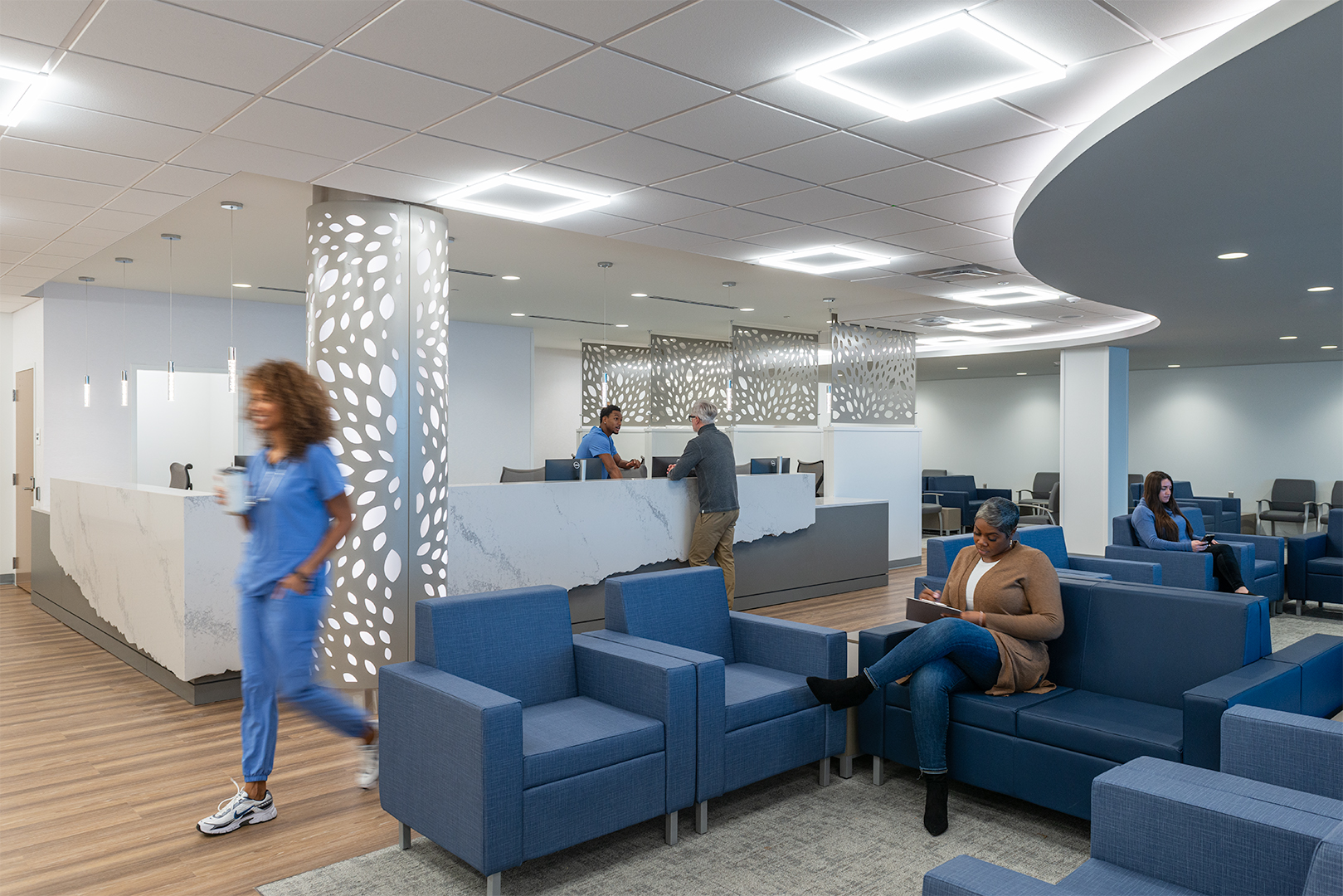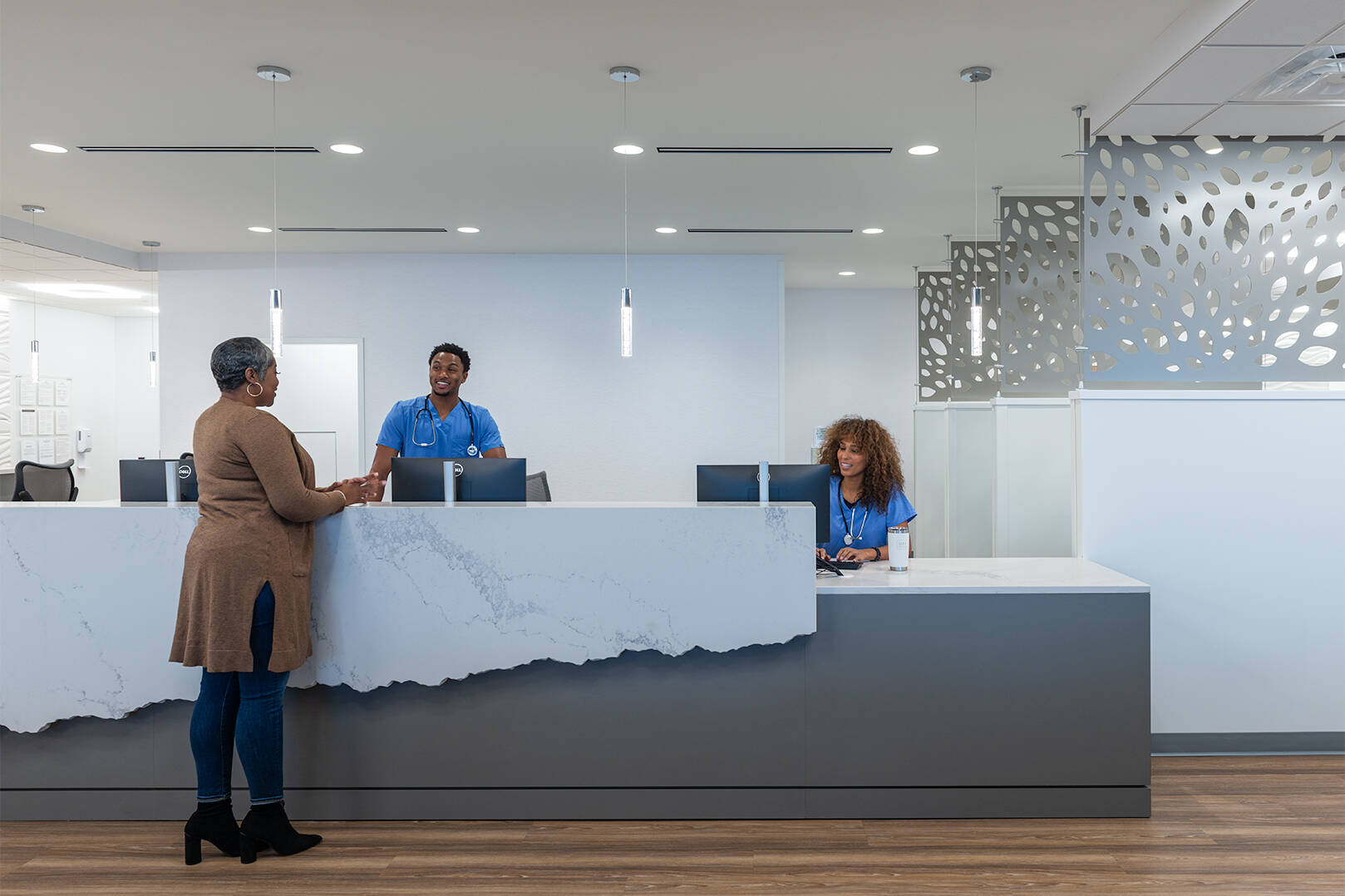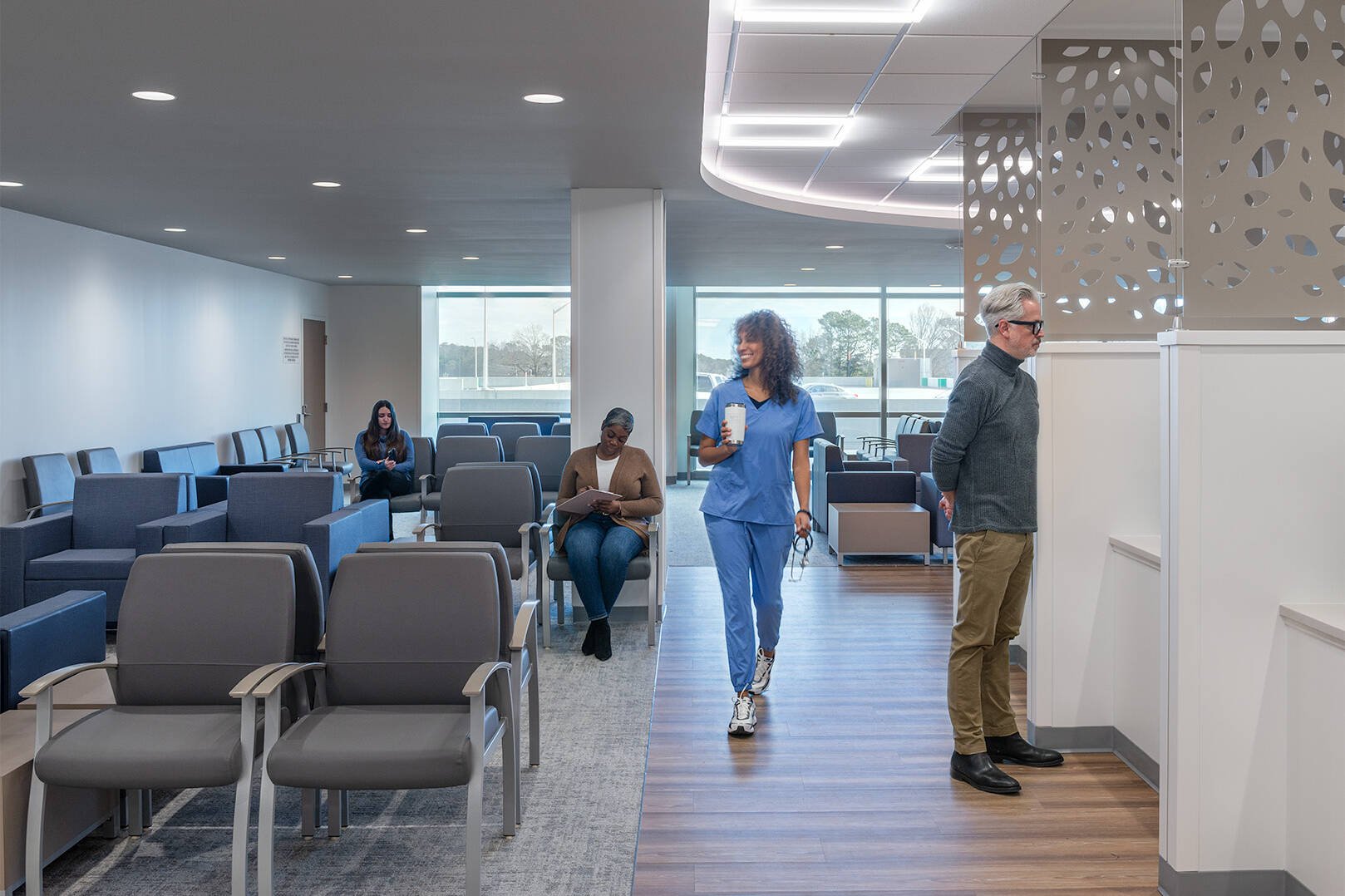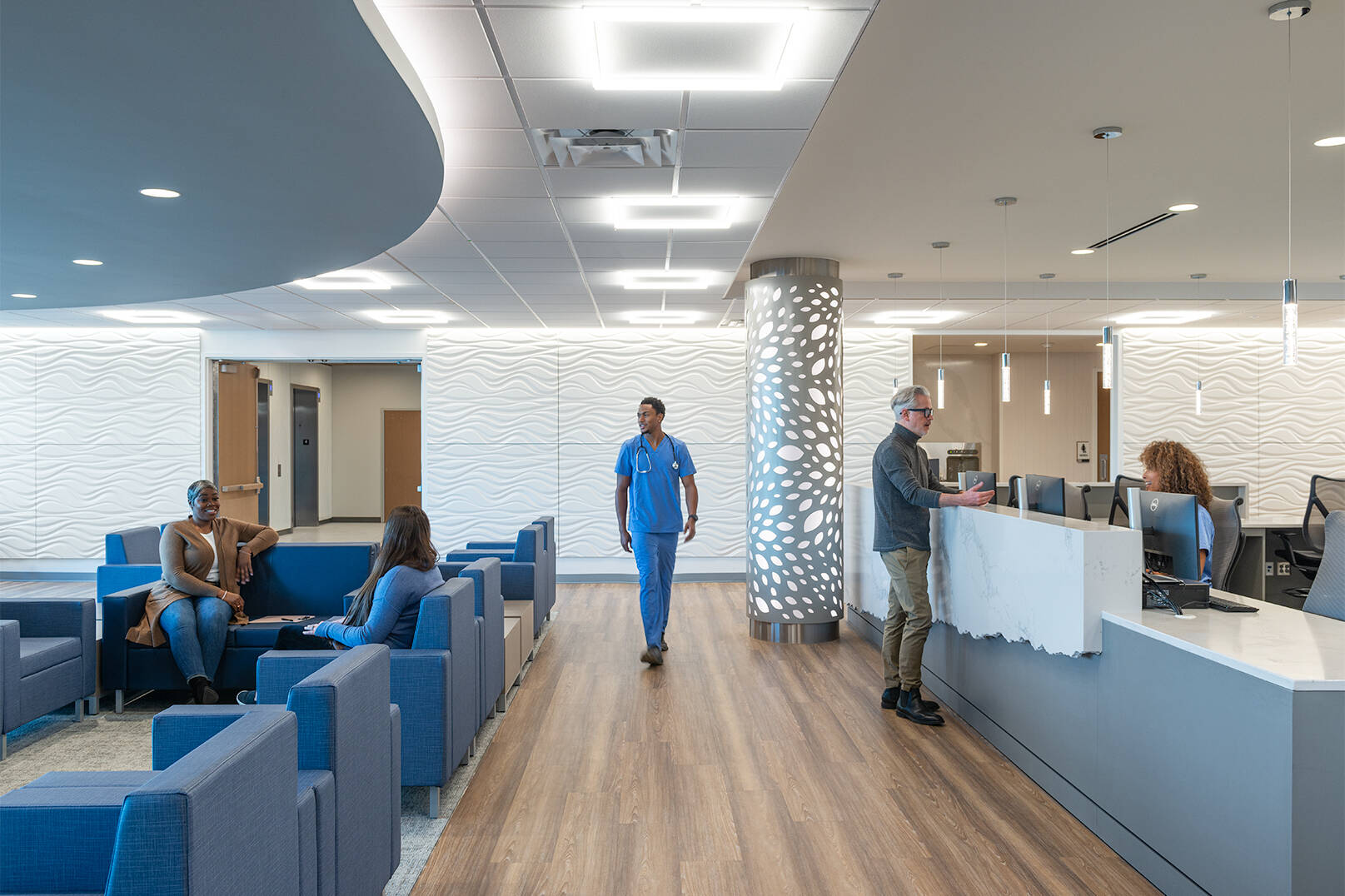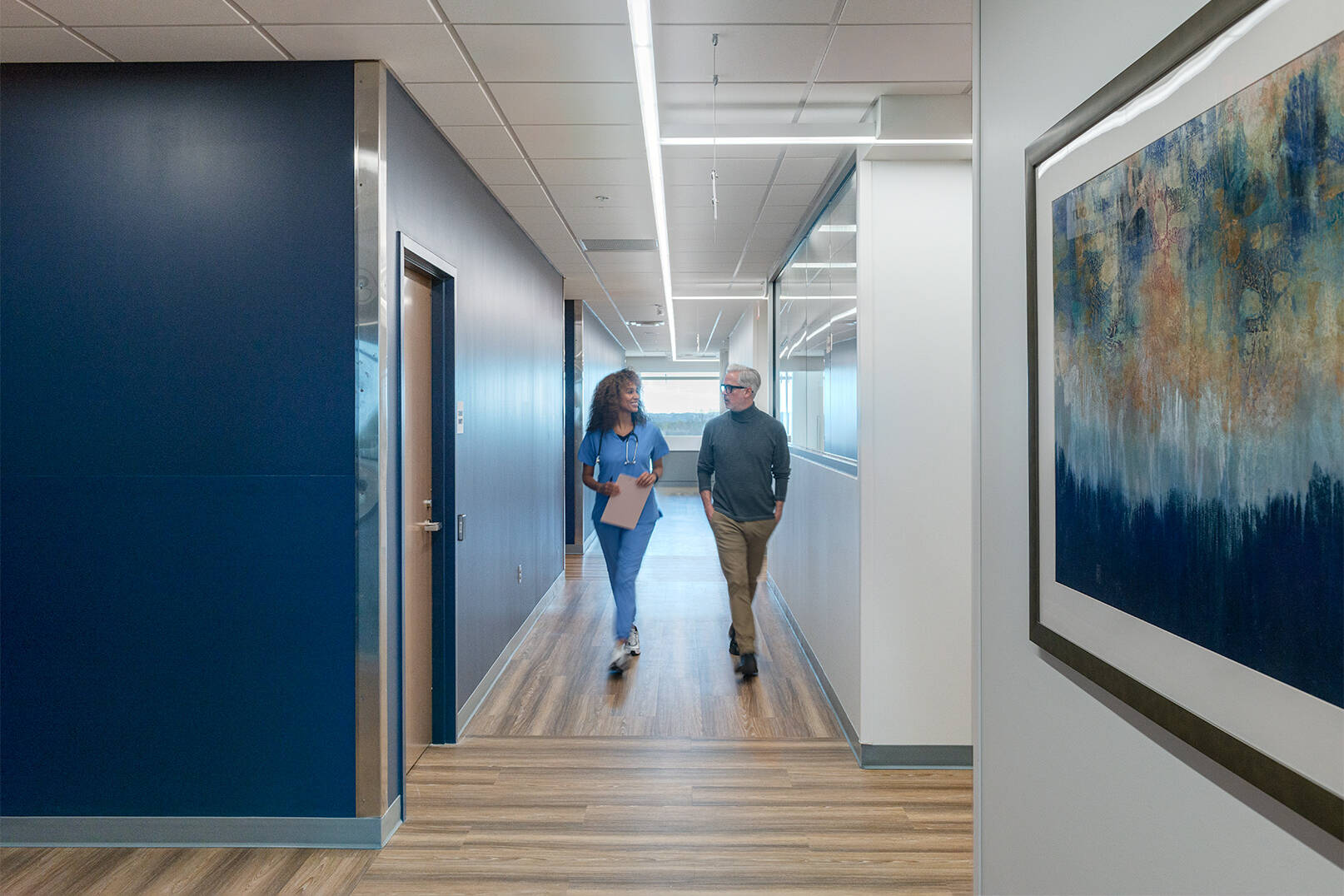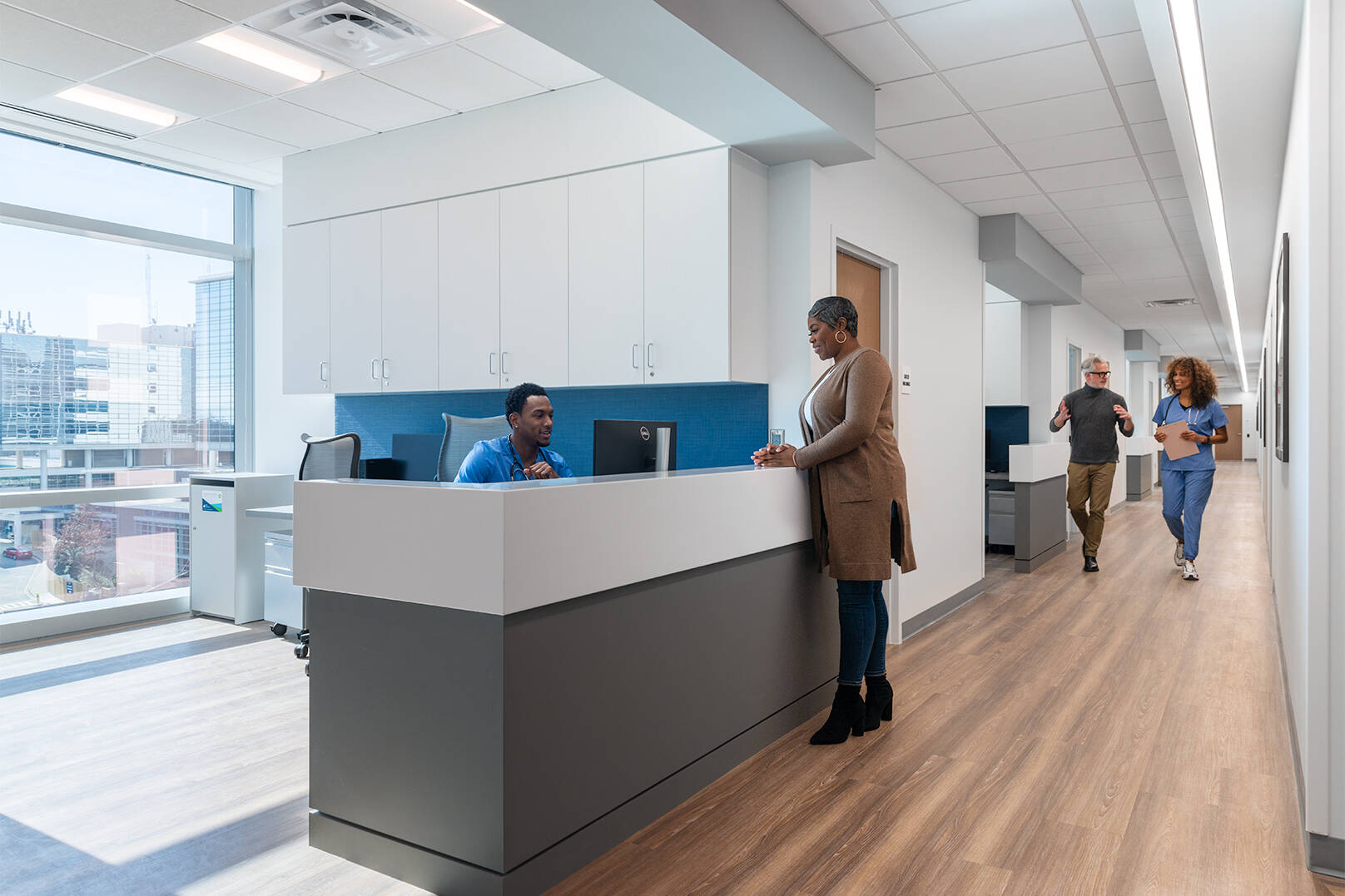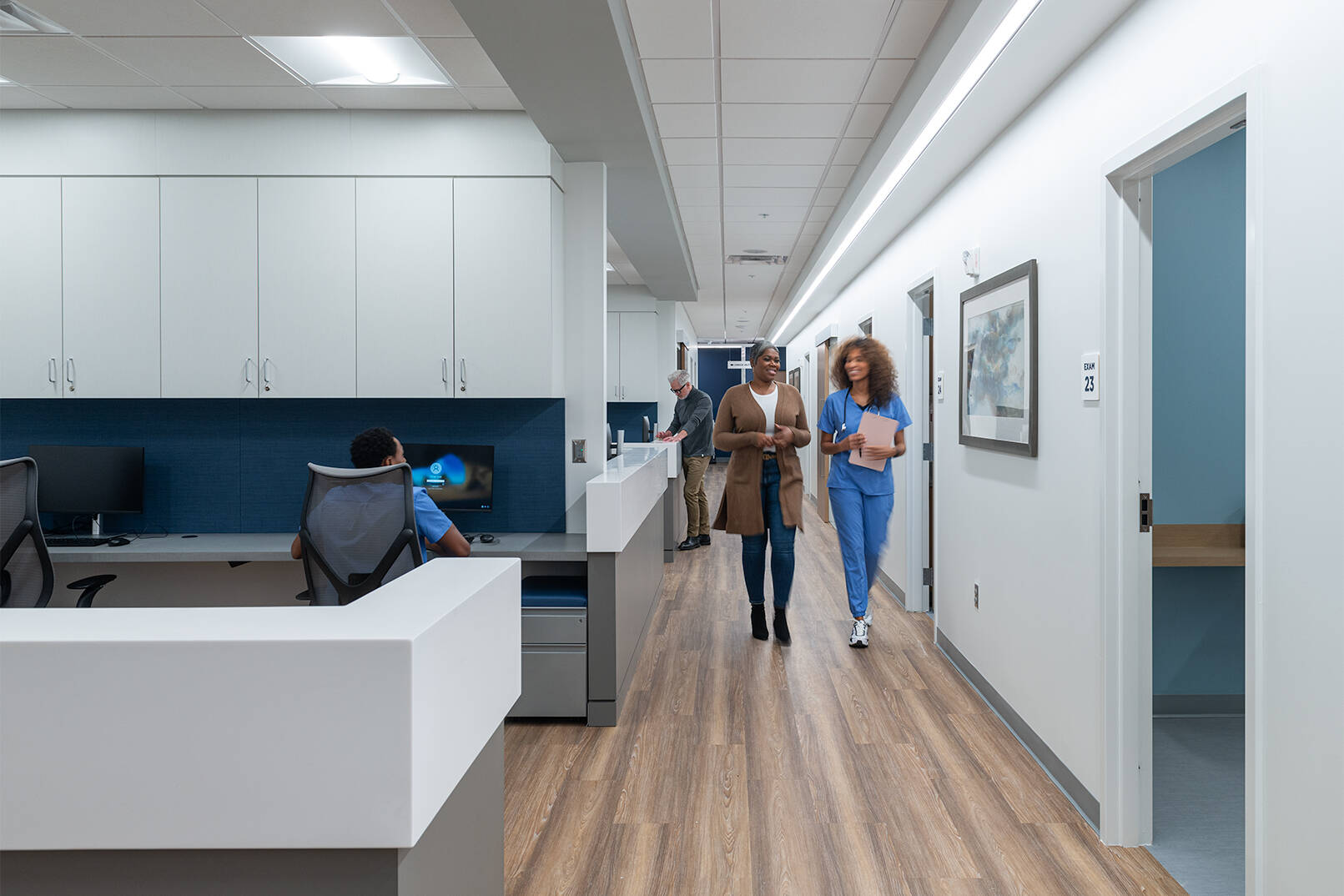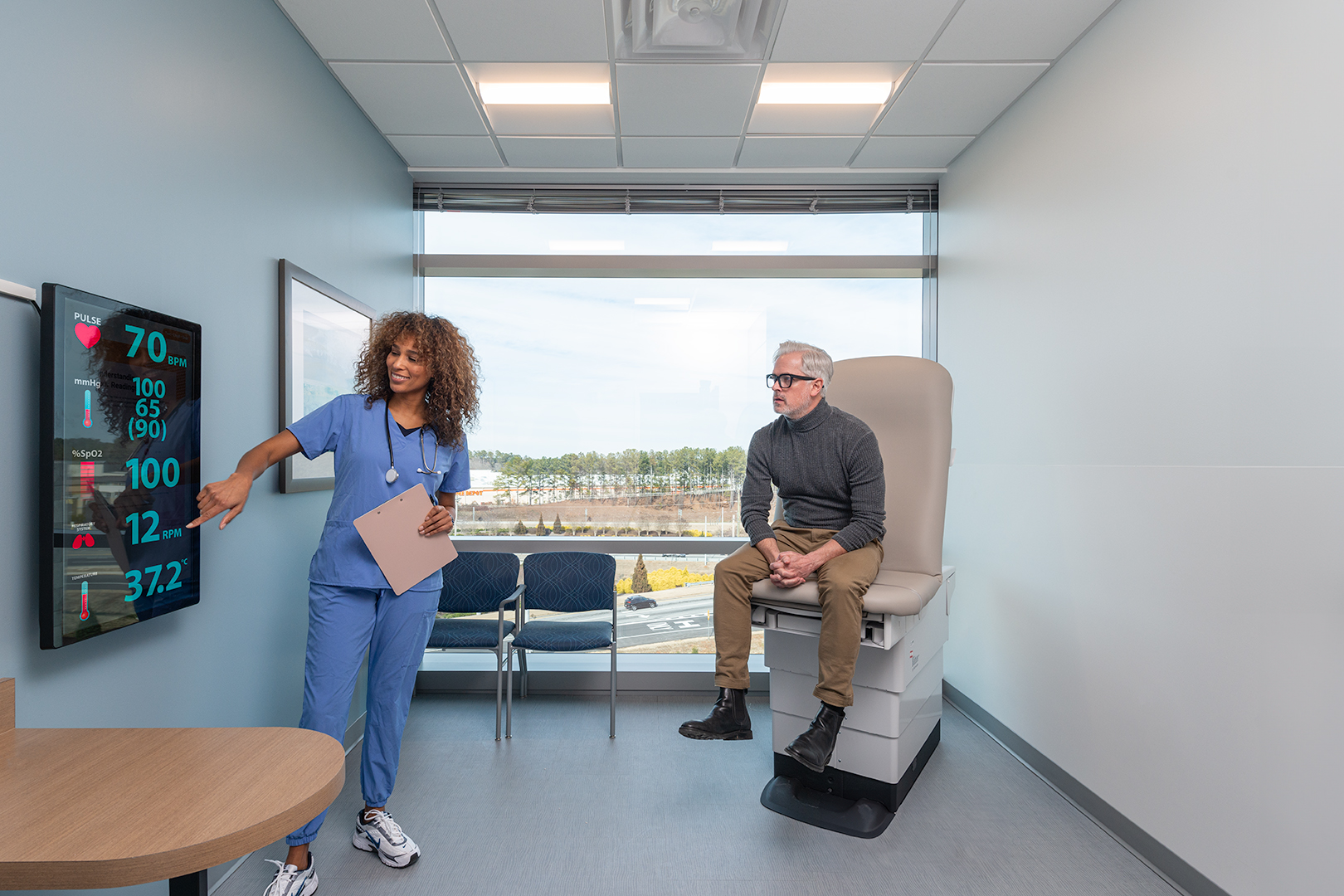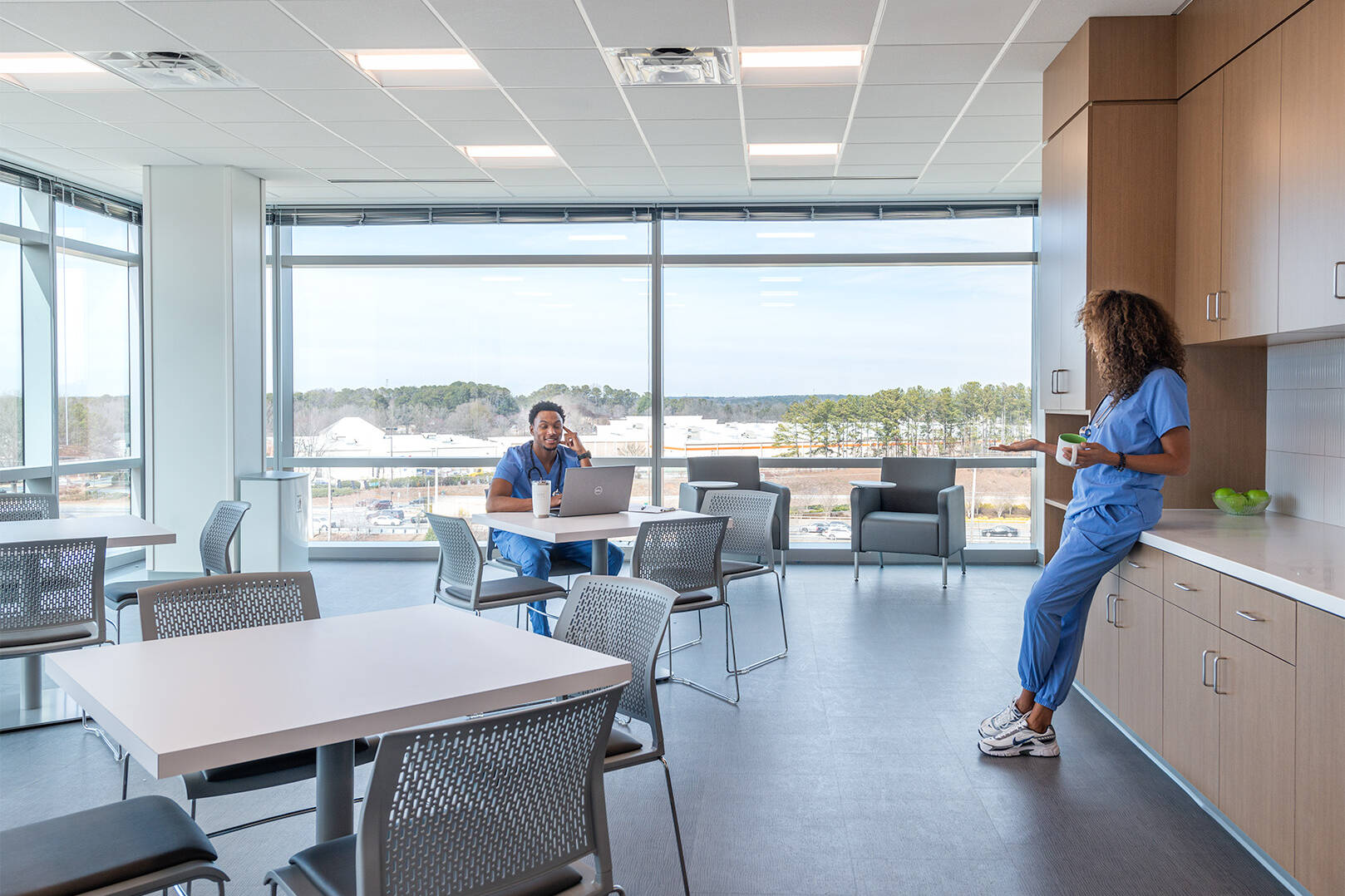This new clinic supports 45 exam rooms, organized into exam room–staff workstation “pods” for transparent provider area distinctions. With so many exam rooms and pods, easy navigation was essential for both patients and staff, so the design prioritized intuitive wayfinding, repeating elements and a connected layout.
When patients first arrive in the clinic from the elevator lobby, the curved, illuminated ceiling coupled with back-lit, patterned column wraps create a visual cue that leads visitors to the check-in desk. The raw-edge quartz countertop of the desk and the smoothly carved wall panels at the check-in kiosks conceptually allude to the network veins, capillaries, and arteries that make up the cardiovascular system.
Beyond check-in, patients are led not only by their provider, but also by the linear light fixtures that span the long corridors flanked by exam rooms. To avoid a tunnel-effect, the design introduced medical assistant workstations spaced periodically along one side of the corridor. Not only does this create a sense of rhythm and grounding, but also allows daylight to penetrate the core of the suite as the work areas are stationed along the exterior walls.
Access to daylight doesn’t stop at patient-facing areas – the staff break room, a place of respite, was strategically located in a corner of the suite, providing staff with a view from the floor-to-ceiling windows on two sides.
When patients have completed their visit, individual check-out stations flanked by metal screens create privacy while not completely closing a patient in. The continuation of similar patterns and textures, partnered with check-in and check-out locations being adjacent to one another, provides a sense of full circulation from the beginning to the end of a visitors’ journey, similar to the cardiovascular system’s cycle.
- ClientNorthside Hospital
- LocationLawrenceville, Georgia
- Project Size30,300 square feet
